germans
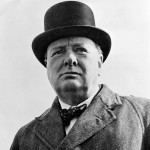
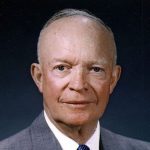 While researching some of the larger battles of World War II, I began to consider the brilliance of the men who planned these battles. Men like Sir Winston Spencer-Churchill, Supreme Allied Commander General Dwight D Eisenhower, Admiral Chester Nimitz, Admiral Frank Fletcher, and Admiral Raymond Spruance (who was a replacement, but proved to be instrumental in the success of Midway). These men and others like them knew that the stakes were high, and by sheer numbers, the Allies were outnumbered by the Axis armies. That said, they also knew that the fate of the world was in their hands. If they lost this war, the Japanese and Germans would quite likely take over and rule the world. Life as we knew it would cease to exist.
While researching some of the larger battles of World War II, I began to consider the brilliance of the men who planned these battles. Men like Sir Winston Spencer-Churchill, Supreme Allied Commander General Dwight D Eisenhower, Admiral Chester Nimitz, Admiral Frank Fletcher, and Admiral Raymond Spruance (who was a replacement, but proved to be instrumental in the success of Midway). These men and others like them knew that the stakes were high, and by sheer numbers, the Allies were outnumbered by the Axis armies. That said, they also knew that the fate of the world was in their hands. If they lost this war, the Japanese and Germans would quite likely take over and rule the world. Life as we knew it would cease to exist.
Strategy is everything. Of course, part of that strategy involves something that many Americans have come to hate these days…fake news. These strategic minds knew that somehow they had to fool the Japanese into believing that no attack was coming, or that the advancing armies were headed elsewhere. It sounds simple, but this wasn’t the movies. Nevertheless, information was leaked to the enemy, while the Allied armies advanced as planned. The strategy worked perfectly on D-Day when Hitler was fooled, by men he had called idiots, into thinking that the target was at some point along their Atlantic Wall…the 1,500-mile system of coastal defenses that the German High Command had constructed from the Arctic Circle to Spain’s northern border…or even as far away as the Balkans. Vital to Operation Bodyguard’s success were more than a dozen German spies in Britain who had been discovered, arrested and flipped by British intelligence officers. The Allies 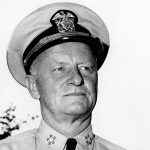 fed faulty information to these Nazi double agents to pass along to Berlin. A pair of double agents nicknamed Mutt and Jeff relayed detailed reports about the fictitious British Fourth Army that was gathering in Scotland with plans to join with the Soviet Union in an invasion of Norway. The Allies also fabricated radio chatter about cold-weather issues such as ski bindings and the operation of tank engines in subzero temperatures. The plan worked as Hitler sent one of his fighting divisions to Scandinavia just weeks before D-Day.
fed faulty information to these Nazi double agents to pass along to Berlin. A pair of double agents nicknamed Mutt and Jeff relayed detailed reports about the fictitious British Fourth Army that was gathering in Scotland with plans to join with the Soviet Union in an invasion of Norway. The Allies also fabricated radio chatter about cold-weather issues such as ski bindings and the operation of tank engines in subzero temperatures. The plan worked as Hitler sent one of his fighting divisions to Scandinavia just weeks before D-Day.
At Midway, the American “Doolittle” raid, a propaganda air attack on Tokyo launched from the carrier USS Hornet, prompted Japanese Admiral Isoroku Yamamoto to plan a final showdown with the remnants of the American fleet before letting his forces rest. The “Doolittle” raid had been an insult and it had threatened the life of the emperor. Yamamoto was confident that he had the advantage in numbers and quality to destroy the American carrier fleet. He planned to confuse the enemy with a diversionary attack on the Alaskan coast, drawing the Americans north, only to launch his main attack on Midway Island the following day, which would see the Americans hurrying south, into an ambush. With a great show of overelaboration, which was typical of Japanese military planning. Yamamoto divided his force into three main groups. There were four big carriers, the battlefleet, and the invasion force. These three groups were too far apart for mutual support. The Japanese carrier group operated in close order, commanded by Admiral Nagumo, who had led them for the attack at Pearl Harbor. Nimitz, for his part, could not hope to win a direct engagement. He had to stake everything on exploiting his intelligence windfall, and try to ambush the enemy. He secretly reinforced the air units on Midway, using the island as an unsinkable aircraft carrier. His sea-going carriers were positioned to the 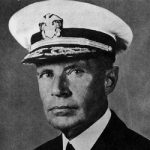
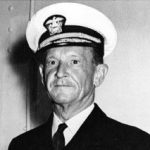 northeast of the island, waiting to ambush the Japanese carriers when they arrived for their assault. The American tactics relied on the peculiar characteristics of carrier warfare. Nimitz knew the first attack would be decisive for either side, carriers being full of fuel and ordnance, hence highly vulnerable to bombs and torpedoes. The American tactical commanders, admirals Frank Fletcher and Raymond Spruance, also knew they were playing for very high stakes. They kept the two task forces separate. The strategy worked, and the Japanese never fully recovered.
northeast of the island, waiting to ambush the Japanese carriers when they arrived for their assault. The American tactics relied on the peculiar characteristics of carrier warfare. Nimitz knew the first attack would be decisive for either side, carriers being full of fuel and ordnance, hence highly vulnerable to bombs and torpedoes. The American tactical commanders, admirals Frank Fletcher and Raymond Spruance, also knew they were playing for very high stakes. They kept the two task forces separate. The strategy worked, and the Japanese never fully recovered.
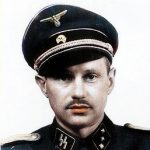 When most people hear the word Nazi, they don’t associate it with anything good. I don’t even think the Nazis of today consider themselves to be an organization for good. Probably the most atrocious part of Nazi Germany was the death camps where the Jewish people were confined, tortured with experimentation, and gassed to their deaths. One such camp, Auschwitz was known for cruelty so egregious that in 1947, after the war was over, a Polish court convened a special tribunal to mete out justice to 40 former Auschwitz personnel.
When most people hear the word Nazi, they don’t associate it with anything good. I don’t even think the Nazis of today consider themselves to be an organization for good. Probably the most atrocious part of Nazi Germany was the death camps where the Jewish people were confined, tortured with experimentation, and gassed to their deaths. One such camp, Auschwitz was known for cruelty so egregious that in 1947, after the war was over, a Polish court convened a special tribunal to mete out justice to 40 former Auschwitz personnel.
The German invasion of Poland in September 1939, sparked World War II, and the Germans immediately converted Auschwitz I, a former army barracks, to hold Polish political prisoners. The first prisoners, German criminals brought to the camp as functionaries, arrived in May 1940, and the first gassing of prisoners took place in block 11 of Auschwitz I in September 1941. Auschwitz II–Birkenau went on to become a major site of the Nazis’ “Final Solution” to the Jewish Question…basically Hitler’s hatred of the Jewish people. Transport trains delivered Jews from all over German-occupied Europe to the camp’s gas chambers from early 1942 until late 1944. Of the estimated 1.3 million people sent to Auschwitz, at least 1.1 million died, approximately 90% of them Jews. It is thoughts that 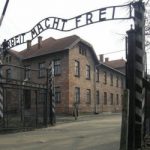 one in six Jews killed in the Holocaust died at Auschwitz. Others deported to Auschwitz included 150,000 non-Jewish Poles, 23,000 Roma, 15,000 Soviet prisoners of war, 400 Jehovah’s Witnesses, tens of thousands of others of diverse nationalities, and an unknown number of gay men. Many of those not killed in the gas chambers died because of starvation, forced labor, infectious diseases, individual executions, and medical experiments.
one in six Jews killed in the Holocaust died at Auschwitz. Others deported to Auschwitz included 150,000 non-Jewish Poles, 23,000 Roma, 15,000 Soviet prisoners of war, 400 Jehovah’s Witnesses, tens of thousands of others of diverse nationalities, and an unknown number of gay men. Many of those not killed in the gas chambers died because of starvation, forced labor, infectious diseases, individual executions, and medical experiments.
The appalling conduct of the Nazi staff at Auschwitz is among the worst treatment of prisoners in human history. In fact, the cruelty routinely perpetrated was so horrific that, in 1947, a Polish court convened a special tribunal to finally deal out justice to 40 former Auschwitz personnel. Of the defendants, 21 were condemned and executed, 18 were convicted and given jail sentences, but one man, Dr Hans Munch, was acquitted. That one acquittal might have been considered an outrage to the world, were it not for the testimony of former prisoners. The former prisoners testified that Munch had been kind and humane. The said that he gave them food and extended bogus experiments on female prisoners because he knew they would be gassed once the 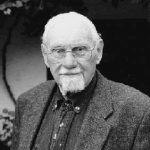 experiments were concluded. Most impressive, Munch refused to participate in the selection process dictating who lived or died at Auschwitz. That in and of itself could have brought about his own death. In the final days of the war, his last official act at a concentration camp was to advise an inmate on how to escape, wish him good luck, and hand the prisoner his service revolver.
experiments were concluded. Most impressive, Munch refused to participate in the selection process dictating who lived or died at Auschwitz. That in and of itself could have brought about his own death. In the final days of the war, his last official act at a concentration camp was to advise an inmate on how to escape, wish him good luck, and hand the prisoner his service revolver.
Sadly, in later life, Munch was diagnosed with Alzheimer’s Disease, ignited a controversy later in his life with bizarre interviews about his tenure at Auschwitz. He got quite mixed up about what went on there, and in my opinion, it is a good thing that the prisoners stood up for this one good Nazi, who wasn’t really a Nazi after all.
 The pilots of the war birds were brave men. They were tasked with staying the course while under heavy anti-aircraft fire and flak. That would be a major undertaking for most of us because in that situation, all our mind can think to do is to turn and run. These men had to stay in place so they could make the bomb runs, or protect those who were. Of course, there were gunners tasked with keeping the enemy planes at bay, but they couldn’t fly the plane to get you home.
The pilots of the war birds were brave men. They were tasked with staying the course while under heavy anti-aircraft fire and flak. That would be a major undertaking for most of us because in that situation, all our mind can think to do is to turn and run. These men had to stay in place so they could make the bomb runs, or protect those who were. Of course, there were gunners tasked with keeping the enemy planes at bay, but they couldn’t fly the plane to get you home.
United States Army Air Force Lieutenant William R Lawley Jr, was a pilot on a B-17 Bomber on February 20, 1944. It was the first day of “Big Week,” and Lieutenant Lawley’s Boeing B-17 Flying Fortress was at the head of a formation of one thousand bombers sent to bomb Germany’s production and aircraft manufacturing facilities. “Big Week” was the Allied plan to spend seven days ruthlessly dropping explosives onto enemy aircraft production facilities deep behind enemy lines. Day and night, wave after wave of American B-17 Flying Fortresses, B-24 Liberators, and British Lancasters blasted shipyards, railroad junctions, power plants, airfields, steel production facilities, dams, and military bases relentlessly, igniting everything from ball bearing plants to oil refineries up into towering explosive fireballs, to make it impossible for anyone in Germany to build a working fighter plane.
Suddenly, the call rang out, “Bandits, incoming, three o’clock high!” Immediately, the gunners began shooting to fight off the enemy planes, while Lawley held the plane steady. The loud, rumbling propellers roared as he pushed open the throttle and smashed through a thick black cloud of anti-aircraft smoke at nearly three hundred miles an hour, all while keeping in tight formation with hundreds of other B-17s. A pair of Nazi Focke-Wulf 190 fighter planes screamed by, ripping off thousands of rounds from twin-linked machine guns and heavy 20mm autocannons. Black puffs of enemy artillery popped up all around Lawley’s massive aircraft craft. The enemy fighters screamed past at speeds of over four hundred miles an hour. As the gray Nazi fighters dove down towards another squadron of American bombers below, Lawley’s starboard waist gunner zeroed in on them with his .50-caliber machine gun with a quick burst of tracer fire, but had to release the trigger as a pair of American P-47 Thunderbolt fighter planes dropped in to chase them. These Bomber raids were nothing new for Lawley. Born in Alabama, this 23 year old veteran pilot had already flown nine missions over Germany in the last year. This was his tenth mission, but the first at the controls of a brand-new B-17, nicknamed Cabin in the Sky III, because the first two Cabin in the Sky aircraft been blown up.
Suddenly, voices on the intercom called out enemy fighters, this time diving down from behind. With the sun at their backs, blinding the tail gunner, the Focke-Wulfs ignored the deadly clouds of flak ripping apart the sky around them and hurtled straight into the B-17 formation. Their 20mm cannons struck home at one of Lawley’s wingmen, catching her engines on fire and dropping her out of the sky like a brick. Another flak explosion hit even closer, rocking Cabin in the Sky III and peppering one of the engines with shards of metal, causing it to burst into flames. Lawley ordered the copilot to shut it down and kept moving. More calls came in. “Six o’clock low.” “Three o’clock level.” The Nazis were everywhere, attacking from seemingly every direction at once. The B-17s stuck close together, knowing that the only way to survive was to stay close and lay down heavy fields of  machine gun fire. As his gunners fired in every direction, Lawley looked through his cockpit window to see a fleet of twenty or so 190s drop down in front of him, pick out targets, and open fire. With a deafening crash, a 20mm high explosive autocannon shell bust through the front window of the pane, exploding in the cockpit. Everything went black.
machine gun fire. As his gunners fired in every direction, Lawley looked through his cockpit window to see a fleet of twenty or so 190s drop down in front of him, pick out targets, and open fire. With a deafening crash, a 20mm high explosive autocannon shell bust through the front window of the pane, exploding in the cockpit. Everything went black.
Lawley snapped awake seconds later, his ears ringing. Alarms were going off all across his console, which was now riddled with shards of shrapnel. His right arm was shattered. Through blurry vision, Lawley saw his co-pilot slumped over dead, his body laying on the control stick pushing it forward, putting the plane was in a steep dive. The loaded bomb racks made matters worse. The pilot-side window was smashed, and broken glass had gone into Lawley’s face, arms, and side. The windshield was so smeared with blood and oil that he could barely see out of it. Another engine was one fire. Lieutenant William Lawley didn’t panic. He did his job. Determined to keep his plane and his crew alive, the veteran USAAF pilot reached out with his shattered right arm, grabbed his dead co-pilot, and somehow pulled him back off the controls. Then, with just his left hand, he manually fought a 15-ton bomber aircraft out of a ninety-degree nosedive at 12,000 feet, leveled it off, and shut down the second burning engine. Looking up, he saw the Focke-Wulf pilots circling around for another pass, so this grim warrior made an evasive turn, dove the plane down into the cloud cover, and accelerated out of there as fast as he could. Other B-17s in the formation had radioed Cabin in the Sky III as Killed in Action, but somehow William Lawley managed to evade the enemy fighters and get the heck out of Leipzig. He flew across Germany, dodging enemy AA positions, then flew in low over the French countryside and ordered the surviving eight members of his crew to grab parachutes and bail out. It was then that he learned all eight crewmen were wounded in the attack, and that two of them were hurt so bad they couldn’t possibly go skydiving right now. Lawley said, “Ok. I’m going to get us home then.” Nobody jumped out of the plane.
The bombardier eventually got the racks unstuck and released his bombs over an unimportant part of the French countryside, but before long another squadron of Me-109 fighters picked up the wounded B-17 on radar and came swooping in for the kill. With his guys running to their guns to bark .50-caliber machine gun fire, Lawley hammered the stick of his crippled plane, dodging and evading with one arm and somehow eluding enemy fighters one more time. In the process, however, he had to use more fuel than he’d have liked, and one of the two remaining engines was now almost completely out of gas. Once the coast was clear and the Messerschmitt fighter planes were gone, Lawley leveled off the plane and promptly passed out from loss of blood. This was the days before autopilot, and Lawley was the only guy who knew how to fly the plane. Luckily his navigator figured out what was up and woke him up pretty much right away.
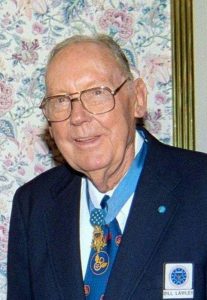
Cabin in the Sky III somehow reached the English Channel against all odds, received emergency landing permission from a Canadian fighter base on the English coast and, just in case you’re wondering how the heck this could possibly get any worse, when William Lawley hit the button to drop his landing gear, it didn’t deploy. So, limping in with three burned-out engines, “feathering” his only working one by pumping it off and on with small amounts of gas, half blinded by broken glass, exhausted from loss of blood, and with no landing gear, eight wounded crew members, and one good arm, Lieutenant William Lawley attempted to crash land a 15-ton B-17 on a grass airfield about the size of a soccer pitch. He came in hard on his belly, sliding across the airfield, finally coming to a rest just outside the Canadian barracks. Every member of his crew survived. Lawley walked out of the wreckage, spend a few weeks in the hospital, and make a full recovery. He successfully piloted four more bombing missions before the war was over. Did he earn his Modal of Honor? Without a doubt!!
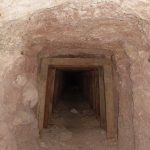
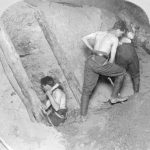 World War I found the British Army with a big problem. The German 4th Army was deeply entrenched at Messines Ridge in northern France, and the British had to remove them…somehow. The British came up with a plan, and for the 18 months prior to June 7, 1917, soldiers had been secretly working to place nearly 1 million pounds of explosives in tunnels under the German positions. The tunnels extended to some 2,000 feet in length, and some were as much as 100 feet below the surface of the ridge, where the German stronghold positions were located. The plan was put into action by the British 2nd Army under the supervision of General Sir Herbert Plumer. The joint explosion of the mines at Messines ranks among the largest non-nuclear explosions of all time. The evening before the attack, General Sir Charles Harington, Chief of Staff of the Second Army, remarked to the press, “Gentlemen, I don’t know whether we are going to make history tomorrow, but at any rate we shall change geography”.
World War I found the British Army with a big problem. The German 4th Army was deeply entrenched at Messines Ridge in northern France, and the British had to remove them…somehow. The British came up with a plan, and for the 18 months prior to June 7, 1917, soldiers had been secretly working to place nearly 1 million pounds of explosives in tunnels under the German positions. The tunnels extended to some 2,000 feet in length, and some were as much as 100 feet below the surface of the ridge, where the German stronghold positions were located. The plan was put into action by the British 2nd Army under the supervision of General Sir Herbert Plumer. The joint explosion of the mines at Messines ranks among the largest non-nuclear explosions of all time. The evening before the attack, General Sir Charles Harington, Chief of Staff of the Second Army, remarked to the press, “Gentlemen, I don’t know whether we are going to make history tomorrow, but at any rate we shall change geography”.
On June 7, 1917, they were ready to carry out their secret attack. The explosions created 19 large craters. It would be a crushing victory over the Germans who had no idea of the impending disaster they were about to face. This attack would mark the successful beginning of an Allied offensive designed to break the grinding stalemate on the Western Front in World War I. The time of the attack was set for 3:10am. Precisely on schedule, a series of simultaneous explosions rocked the area. The blast from the detonation of all those landmines was heard as far away as London. A German observer described the explosions, “nineteen gigantic roses with carmine petals, or enormous mushrooms, rose up slowly and majestically out of the ground and 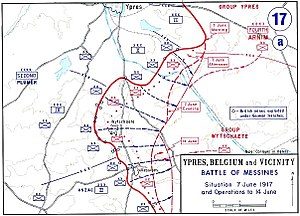
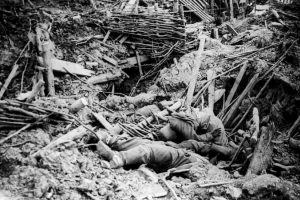 then split into pieces with a mighty roar, sending up multi-colored columns of flame mixed with a mass of earth and splinters high in the sky.” German losses that day included more than 10,000 men who died instantly, along with some 7,000 prisoners…men too stunned and disoriented by the explosions to resist the infantry assault.
then split into pieces with a mighty roar, sending up multi-colored columns of flame mixed with a mass of earth and splinters high in the sky.” German losses that day included more than 10,000 men who died instantly, along with some 7,000 prisoners…men too stunned and disoriented by the explosions to resist the infantry assault.
Although Messines Ridge battle was, itself was a relatively limited victory, it had a considerable effect on the German morale. The Germans were forced to retreat to the east, a sacrifice that marked the beginning of their gradual, but continuous loss of territory on the Western Front. It also secured the right flank of the British thrust towards the highly contested Ypres region, which was the eventual objective of the planned offensive. Over the next month and a half, British forces continued to push the Germans back toward the high ridge at Passchendaele, which on July 31 saw the launch of the British offensive known as the Battle of Passchendaele. The Battle of Messines marked the high point of mine warfare. On August 10, 1917, the Royal Engineers fired the last British deep mine of the war, at Givenchy-en-Gohelle near Arras.
The explosions left a mine crater 40 feet deep. The attack had done its job. Still, after the war was over, the crater remained, and some wanted to change the “feel” of the place. Nowadays, this mine crater is a serene, contemplative place. I’m sure that many who visit there feel the significance of the location, but also know just  how necessary it was to ensure the freedom of France from the tyranny of the German forces. Named The Pool of Peace, it is a 40 foot deep lake near Messines, Belgium. It fills one of the craters made in 1917 when the British detonated a mine containing 45 tons of explosives. The pool stretches 423 feet across, and remains a place of solace that receives many visitors every year. It seems to me that, while most of those killed in the mine fields on June 7, 1917, were Germans, and therefore, the enemy, they were also people, many of whom didn’t want to be there any more than the Allies did. They were there under orders, and that was all there was to it. For that reason, I believe that place should be, finally, a place of peace.
how necessary it was to ensure the freedom of France from the tyranny of the German forces. Named The Pool of Peace, it is a 40 foot deep lake near Messines, Belgium. It fills one of the craters made in 1917 when the British detonated a mine containing 45 tons of explosives. The pool stretches 423 feet across, and remains a place of solace that receives many visitors every year. It seems to me that, while most of those killed in the mine fields on June 7, 1917, were Germans, and therefore, the enemy, they were also people, many of whom didn’t want to be there any more than the Allies did. They were there under orders, and that was all there was to it. For that reason, I believe that place should be, finally, a place of peace.
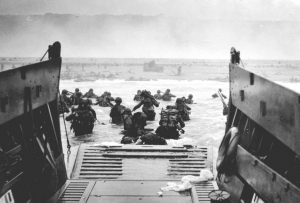 Most people from the Baby Boomer Generation know the significance of D-Day, but it occurs to me that many people in the younger generations may not really know what it was all about. Operation Overlord was the Allied invasion of northern France, commonly known as D-Day. The operation was under the direction of Supreme Allied Commander General Dwight D. Eisenhower. The operation had a brief 3 day window in which to take place, and June 5th had been chosen to be the day, but the day dawned gloomy, so the operation had to be scrubbed for the day.
Most people from the Baby Boomer Generation know the significance of D-Day, but it occurs to me that many people in the younger generations may not really know what it was all about. Operation Overlord was the Allied invasion of northern France, commonly known as D-Day. The operation was under the direction of Supreme Allied Commander General Dwight D. Eisenhower. The operation had a brief 3 day window in which to take place, and June 5th had been chosen to be the day, but the day dawned gloomy, so the operation had to be scrubbed for the day.
Then on June 6th, the orders came down that Operation Overlord was a go. By daybreak, 18,000 British and American parachutists were already on the ground. An additional 13,000 aircraft were mobilized to provide air cover and support for the invasion, among them the B-17, Raggedy Ann, which was carrying my dad, Allen Spencer, who was a Top Turret Gunner and Flight Engineer. At 6:30 am, American troops came ashore at Utah and Omaha beaches. The British and Canadians overcame light opposition to capture Gold, Juno and Sword beaches, as did the Americans at Utah. Omaha beach was a much different situation, however, where the US First Division battled high seas, mist, mines, burning vehicles, and German coastal batteries, including an elite infantry division, which spewed heavy fire. Many wounded Americans ultimately drowned in the high tide. British divisions, which landed at Gold, Juno, and Sword beaches, and Canadian troops also met with heavy German fire.
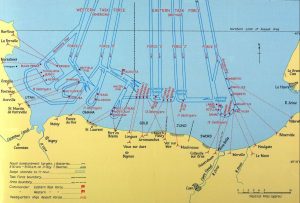
The troops persevered, even though the loses were great, and in the end the operation was declared a victory. There were many reasons that D-Day was successful, even against all odds. The Allies had fooled the Germans, who thought the attack was going to occur farther along the coast at Calais because this was the shortest route by sea, even when the attack began on the beaches Hitler was still convinced the attack was going to occur at Calais. What a shock that must have been when he found out that the attack took place on the beaches of Normandy. False intelligence spread by the allies spread false information to the Germans, and they bought it.
There were many factors that all worked together to make the plan work. Wooden guns on the South Coast of England, wooden planes, dropped plastic dummies out of planes, they put mirrors up on their ships and the Germans were fooled as they saw themselves going the other way. New technology specifically designed for the landing enabled the Allies to gain an advantage over the Germans. Mulberries, the floating docks the Allies used to land, enabled the Allies to land safely and disembark while firing. Some of the beaches were practically empty, however, on Omaha beach the Allies suffered heavy losses numbering 2000 in total. Operation Overlord had been planned for many years and so they were ready. The Germans had to keep control of the other parts of their empires, so their troops were elsewhere. Hitler denied that his forces were losing in Normandy, and  would not authorize the mobilization of forces stationed near Normandy.
would not authorize the mobilization of forces stationed near Normandy.
As for the Allies, the troops involved were highly trained, equipped and motivated. Their battle plan was well prepared. All the necessary manpower and logistics were available to them. The air space was controlled by the Allies. The sea lanes were very short and the seas were in Allied hands. The deception plan was flawless. The Germans had no idea what was coming. The French Resistance was highly effective. The German troop who were there were poorly motivated. Hitler’s Defense Planning was completely flawed. But, the biggest victory is that the troops did their job.
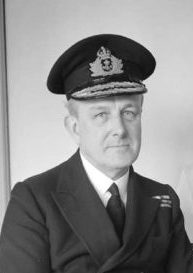 There was, during the Second World War, a somewhat strange and almost morbid plan that was concocted to dupe the Germans into believing that the Allies were going to invade Greece in 1943, when in fact, they were going to invade Sicily, some 500 miles away. The success of the mission really depended on the element of surprise, and in the end, the Allies needed something that would be believable to the Germans.
There was, during the Second World War, a somewhat strange and almost morbid plan that was concocted to dupe the Germans into believing that the Allies were going to invade Greece in 1943, when in fact, they were going to invade Sicily, some 500 miles away. The success of the mission really depended on the element of surprise, and in the end, the Allies needed something that would be believable to the Germans.
The thing that made the operation morbid was that in the end, they would use a dead body to bring about their deception. In their plan a body was dumped in the sea, to be discovered by Axis forces, carrying fake secret documents suggesting the invasion would be staged in Greece. They were a bit shocked when their plan worked, but work it did. The German troops were diverted to Greece, and Operation Mincemeat became a huge success, but even after it was over, it remained a source of secrecy, confusion, and conspiracy theory. The biggest source of confusion being…just who was this man who was found floating in the ocean, and how did he really die? For most people, the operation remains a mystery to this day, but one man believes that he now knows the true identity of the man found floating in the ocean.
In the 1956 film called “The Man Who Never Was,” one historian claims to have finally established beyond any reasonable doubt the identity of the person who played the part of the dead man, He believes he was a homeless Welshman named Glyndwr Michael. The body, which was given the identity of a fake Royal Marine, Major William Martin, was dropped into the sea off Spain in 1943. Winston Churchill had remarked that “Anyone but a bloody fool would know it was Sicily”, but after the tides carried Major Martin’s body into the clutches of Nazi agents, Hitler and his High Command became convinced Greece was the target. “You can forget about Sicily. We know it’s in Greece,” proclaimed General Alfred Jodl, head of the German supreme command operations staff.
“Mincemeat swallowed, rod, line and sinker” was the message sent to Churchill after the Allies learned the plot had worked. In recent years, there have been repeated claims that Mincemeat’s chief planner, Lieutenant Commander Ewen Montagu, was so intent on deceiving the Germans that he stole the body of a crew member from HMS Dasher, a Royal Navy aircraft carrier which exploded off the Scottish coast in March 1943, and lied to the dead man’s relatives. In 2003, a documentary based on 14 years of research by former police officer Colin 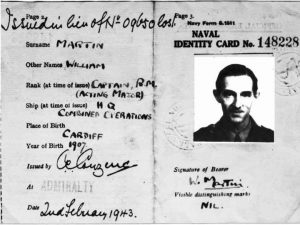 Gibbon claimed that ‘Major Martin’ was Dasher sailor Tom Martin. Then in 2004, official sanction appeared to be given to another candidate, Tom Martin’s crewmate John Melville. At a memorial service on board the current HMS Dasher, a Royal Navy patrol vessel, off the coast of Cyprus, Lieutenant Commander Mark Hill named Mr Melville as Major Martin, describing him as “a man who most certainly was”. Mr Melville’s daughter, Isobel Mackay, later told The Scotsman newspaper: “I feel very honored if my father saved 30,000 Allied lives.” I don’t suppose that we will ever know who the man really was, without exhuming his body, and that hardly seems right. Whoever he was, his family can rest assured that he saved many lives that day.
Gibbon claimed that ‘Major Martin’ was Dasher sailor Tom Martin. Then in 2004, official sanction appeared to be given to another candidate, Tom Martin’s crewmate John Melville. At a memorial service on board the current HMS Dasher, a Royal Navy patrol vessel, off the coast of Cyprus, Lieutenant Commander Mark Hill named Mr Melville as Major Martin, describing him as “a man who most certainly was”. Mr Melville’s daughter, Isobel Mackay, later told The Scotsman newspaper: “I feel very honored if my father saved 30,000 Allied lives.” I don’t suppose that we will ever know who the man really was, without exhuming his body, and that hardly seems right. Whoever he was, his family can rest assured that he saved many lives that day.
 Yesterday was National Holocaust Remembrance Day, I started thinking about all that happened to those poor victims of the Holocaust, and because yesterday was the day that the prisoners of Auschwitz were liberated, I began to contemplate what it must have been like for them as the exited that horrible camp. My guess is that their first thought was one of thankfulness that they had actually come out alive. Going into Auschwitz, I’m sure many had hopes that it would be just a camp for prisoners of war, and that they might be treated fairly, but as their friends began to disappear, never to return, I’m sure they knew to horrific truth. This was not a prisoner of war camp, is was a death camp, and the whole goal was to experiment, torture, and kill the prisoners. The people who worked there, were given authority to do as they pleased.
Yesterday was National Holocaust Remembrance Day, I started thinking about all that happened to those poor victims of the Holocaust, and because yesterday was the day that the prisoners of Auschwitz were liberated, I began to contemplate what it must have been like for them as the exited that horrible camp. My guess is that their first thought was one of thankfulness that they had actually come out alive. Going into Auschwitz, I’m sure many had hopes that it would be just a camp for prisoners of war, and that they might be treated fairly, but as their friends began to disappear, never to return, I’m sure they knew to horrific truth. This was not a prisoner of war camp, is was a death camp, and the whole goal was to experiment, torture, and kill the prisoners. The people who worked there, were given authority to do as they pleased.
As the prisoners were taken out of the camp, I’m sure there was a mixture of feelings…relief and guilt. Relief because they had lived through one of the worst atrocities in history…and guilt, because they had lived through one of the worst atrocities in history…while so many others did not. The guilt would have been horrible. Parents who made it out, while their children did not; children who made it out, while their parents did not. They were free, but homeless. They were weary, and many were sick or dying of starvation. The experiments performed on them probably left irreparable damage to their bodies and minds. I’m sure their thoughts were racing as the walked away from the worst time in their lives.
Their futures were uncertain. They didn’t know if they would be accepted in their home country, or if they 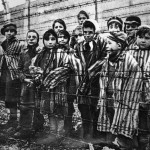 would have to immigrate to another country to find real freedom. And I’m sure that the worst thought was the possibility that it could happen again. Once something like the holocaust happened to a people, how could they possibly trust another nation again, and yet they would, because as horrible as the Holocaust was, there were many good people, and many good nations who were completely against the atrocities that happen during those years…people and nations who would never forget what happened. The Holocaust was an atrocity beyond the ability of most human beings ability to wrap their minds around, but it was something that was impossible to forget, for those who lived it. The horror they suffered would haunt them for the rest of their lives. It would be impossible to remove the nightmare they lived from their memory.
would have to immigrate to another country to find real freedom. And I’m sure that the worst thought was the possibility that it could happen again. Once something like the holocaust happened to a people, how could they possibly trust another nation again, and yet they would, because as horrible as the Holocaust was, there were many good people, and many good nations who were completely against the atrocities that happen during those years…people and nations who would never forget what happened. The Holocaust was an atrocity beyond the ability of most human beings ability to wrap their minds around, but it was something that was impossible to forget, for those who lived it. The horror they suffered would haunt them for the rest of their lives. It would be impossible to remove the nightmare they lived from their memory.
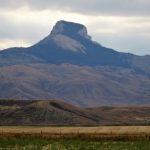
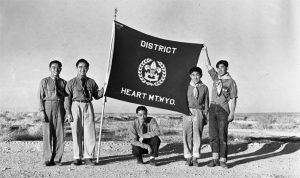 In the middle of a war, the people of a nation become concerned about anyone who might potentially be the enemy, especially if they are living inside the country’s borders. It is really a natural reaction to enemy personnel. After the Japanese attacked Pearl Harbor, the United states became quite concerned about the Japanese immigrants in our country, whether they were here legally or not. Much of the immigration to the United States from Japan began in 1884, when thousands of Japanese arrived in Hawaii to work the sugar cane fields. In the wake of the 1882 Chinese Exclusion Act, which drastically restricted Chinese immigration, Japanese people began arriving and began to prosper and started small businesses or became farmers. Most of them settled along the West Coast, meaning roughly 13,000 people of Japanese descent lived in the Intermountain West prior to World War II. The attack on Pearl Harbor, heightened the level of concern about those people.
In the middle of a war, the people of a nation become concerned about anyone who might potentially be the enemy, especially if they are living inside the country’s borders. It is really a natural reaction to enemy personnel. After the Japanese attacked Pearl Harbor, the United states became quite concerned about the Japanese immigrants in our country, whether they were here legally or not. Much of the immigration to the United States from Japan began in 1884, when thousands of Japanese arrived in Hawaii to work the sugar cane fields. In the wake of the 1882 Chinese Exclusion Act, which drastically restricted Chinese immigration, Japanese people began arriving and began to prosper and started small businesses or became farmers. Most of them settled along the West Coast, meaning roughly 13,000 people of Japanese descent lived in the Intermountain West prior to World War II. The attack on Pearl Harbor, heightened the level of concern about those people.
It was decided that, because their loyalties could not positively be confirmed, the Japanese immigrants needed to be rounded up and put in concentration camps. I suppose this might have seemed similar to what the Germans did to the Jewish people, but the Japanese people were not murdered in the camps, like the Jews were. And so it came to be that the people of Japanese descent from Oregon, Washington and California were incarcerated at the Heart Mountain Relocation Center in Park County, Wyoming, by the executive order of President Franklin Roosevelt. The prisoners were held at the camp from August 12, 1942 to November 10, 1945, which was actually two months after the end of the war with Japan. The camp was populated with 10,000 people at its largest, making it the third largest town in the state at the time.
I have tried to imagine what it must have been like for those Japanese immigrants to be held in the Heart Mountain Relocation Center for as much as 2 years and 3 months. Of course, the illegal immigrants of our time immediately came to my mind, but there is a difference between these people and the illegal immigrants of today. These people were here legally, and most of them had already become citizens. Unfortunately, that did not calm the worried minds of the rest of the people of the United States. Our nation had been attacked, and the attackers looked just like the Japanese immigrants. Precautions had to be taken. I’d like to think that if it were me, in that position, that I would understand why this was happening, but I’m not so sure I would. After all, these people were not criminals. They were hard working Americans, and yet they were for a time…the enemy, or possibly the enemy.
Unfortunately, like many prior immigrant groups, the Japanese faced discrimination. Things aren’t always fair, and people aren’t always treated properly. Starting in the early 20th century, Japanese immigrants, as well as Chinese immigrants, were targeted by Alien Land Laws in western states including Wyoming. These laws prevented the Asian immigrants from buying land. In 1924, the United States Congress passed the Asian Exclusion Act, which all but cut off new immigration from Asia. In response, Japanese Americans formed organizations such as the Japanese American Citizens’ League to help address their shared challenges. Despite 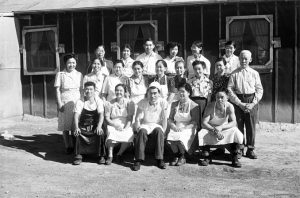 the attempts of Japanese Americans to fit in, some people expressed ongoing skepticism regarding the place of Asians in American society.
the attempts of Japanese Americans to fit in, some people expressed ongoing skepticism regarding the place of Asians in American society.
The Heart Mountain facility consisted of 450 barracks, each containing six apartments, when the first internees arrived on August 12, 1942. The largest apartments were simply single rooms measuring 24 feet by 20 feet. The barracks were covered with tar paper. While each unit was eventually outfitted with a potbellied stove, none had bathrooms. The people all used shared latrines. None of the apartments had kitchens. The residents ate their meals in mess halls. When the people first arrived, a barbed-wire fence to surround the camp was not yet complete. The internees protested the construction of this barrier and caused further work to be delayed. In November 1942, they submitted a petition containing 3,000 signatures to the War Relocation Authority (WRA) Director Dillon Meyer. The fence was completed by December, however, and further emphasized the sense of confinement among the internees. Shortly after the construction of the fence, 32 boys were arrested for sledding in the hills beyond the boundary. In response to the perceived overreaction on the part of the camp administration, Rikio Tomo, a Heart Mountain internee, placed an editorial in the Heart Mountain Sentinel asking for clarification about the internees’ citizenship status and constitutional freedoms. Schools were built at Heart Mountain, including a high school, to accommodate the children. These schools served students from elementary school through high school. Roughly 1500 students attended Heart Mountain High School, which included grades 8-12.
The internees provided most of the labor required to run the Heart Mountain camp, while WRA administrators oversaw its general operations. Wages ranged from $12 per month for unskilled labor to $19 per month for skilled labor, including teachers for the schools and doctors in the camp hospitals. In addition, Heart Mountain internees also worked as manual laborers on farms and ranches in Wyoming and nearby states from Nebraska to Oregon. The WRA administrators encouraged activities emphasizing American civics, such as scouting and adult English classes, as part of what they saw as an Americanization process. Committees composed initially of American-born internees provided much of the day-to-day governance of the camps. While these groups provided some measure of self-determination, they disrupted the generational hierarchy. American-born adults in their 20s and 30s were given a higher political status within the camps than their Japanese-born parents.
In 1943, General George Marshall approved the creation of the Japanese-American combat unit. As a result of the low turnout, the War Department extended the draft to the camps. It was decided that while they were not free to go where they chose, these people were needed to serve their country, so a draft was instituted. After they were drafted into the U.S. Army, soldiers from Heart Mountain occasionally returned to visit their families who were still held there. Somehow that doesn’t seem quite fair to me, and many of the prisoners agreed. They thought they should have been given their constitutional rights back before they were drafted. The organization of draft resistance distinguished Heart Mountain from the other relocation centers. The plan, which was given the endorsement of President Roosevelt, was to create an all-Japanese regiment, consisting of soldiers from a previously existing Hawaiian unit and volunteers from the camps. The response from within the camps fell far short of expectations, partly because of a loyalty questionnaire distributed by the WRA. The WRA form was used to determine eligibility for military service and permanent leave. Many of the questions were considered intrusive by prisoners. Others were not as straightforward as the WRA probably intended. Instead of serving as a neutral tool to determine someone’s suitability for service, the questionnaire further alienated many the men. To me it seems that the WRA was somehow not aware of how racist the entire situation really was. For example, question 27 asked about a person’s willingness to serve in the military. For 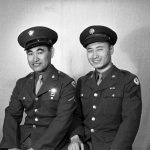
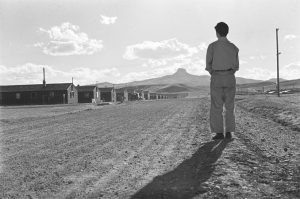 prisoners who felt service should be contingent upon the restoration of constitutional rights to all Japanese Americans, a simple yes or no answer was insufficient. In each of the camps, the draft became a divisive issue. While some prisoners felt military service was an opportunity to exemplify patriotism, others felt that constitutional rights should be restored before agreeing to mandatory service. I doubt if the situation would have ever really been resolved, except that the war ended.
prisoners who felt service should be contingent upon the restoration of constitutional rights to all Japanese Americans, a simple yes or no answer was insufficient. In each of the camps, the draft became a divisive issue. While some prisoners felt military service was an opportunity to exemplify patriotism, others felt that constitutional rights should be restored before agreeing to mandatory service. I doubt if the situation would have ever really been resolved, except that the war ended.
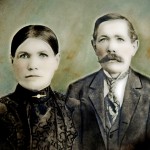 My great grandparents, Carl and Henriette (Hensel) Schumacher immigrated to the United States from Germany, in 1884 and 1882 respectively. It was an amazing time for them. The United States was a whole new world, and for those who came, the land of opportunity. By 1886, they were married and ready to start a family. My grandmother, Anna Schumacher was born in 1887, followed by siblings Albert, Mary (who died before she was 3), Mina, Fred, Bertha, and Elsa, who was born in 1902.
My great grandparents, Carl and Henriette (Hensel) Schumacher immigrated to the United States from Germany, in 1884 and 1882 respectively. It was an amazing time for them. The United States was a whole new world, and for those who came, the land of opportunity. By 1886, they were married and ready to start a family. My grandmother, Anna Schumacher was born in 1887, followed by siblings Albert, Mary (who died before she was 3), Mina, Fred, Bertha, and Elsa, who was born in 1902.
By 1914, World War I broke out, following the assassination of Franz Ferdinand. The government of the United States was understandably nervous about the German immigrants now living in in America. It didn’t matter that many of these people had been living in the united States for a long time, and some had become citizens, married, and had families. The government was still nervous, and I can understand how that could be, because we have the same problem these days with the Muslim nations. Still, when I think about the fact that these were my sweet, kind, and loving, totally Lutheran great grandparents, I find it hard to believe that anyone could be nervous about them. Apparently, I was right, because to my knowledge, they were never detained in any of the internment camps, nor were they even threatened with it.
Nevertheless, there were German nationals, and even naturalized citizens who faced possible detention during 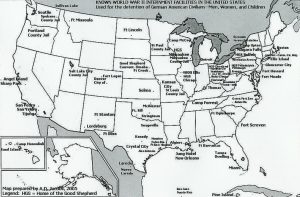 World War I and World War II. By World War II, President Franklin Delano Roosevelt declared Presidential Proclamation 2526, the legal basis for internment under the authority of the Alien and Sedition Acts. With the United States’ entry into World War I, the German nationals were automatically classified as “enemy aliens.” Two of the four main World War I-era internment camps were located in Hot Springs, North Carolina and Fort Oglethorpe, Georgia. Attorney General A. Mitchell Palmer wrote that “All aliens interned by the government are regarded as enemies, and their property is treated accordingly.”
World War I and World War II. By World War II, President Franklin Delano Roosevelt declared Presidential Proclamation 2526, the legal basis for internment under the authority of the Alien and Sedition Acts. With the United States’ entry into World War I, the German nationals were automatically classified as “enemy aliens.” Two of the four main World War I-era internment camps were located in Hot Springs, North Carolina and Fort Oglethorpe, Georgia. Attorney General A. Mitchell Palmer wrote that “All aliens interned by the government are regarded as enemies, and their property is treated accordingly.”
By the time of World War II, the United States had a large population of ethnic Germans. Among residents of the United States in 1940, more than 1.2 million persons had been born in Germany, 5 million had two native-German parents, and 6 million had one native-German parent. Many more had distant German ancestry. With that many people of German ancestry, it seems impossible that they could have detained all of them. Nevertheless, at least 11,000 ethnic Germans, overwhelmingly German nationals were detained during World War II in the United States. The government examined the cases of German nationals individually, and detained relatively few in internment camps run by the Department of Justice, as per its responsibilities under the Alien and Sedition Acts. To a much lesser extent, some ethnic German United States citizens were classified as suspect after due process and also detained. There were also a small proportion of Italian nationals 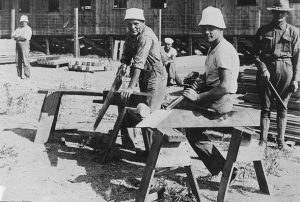 and Italian Americans who were interned in relation to their total population in the United States. The United States had allowed immigrants from both Germany and Italy to become naturalized citizens, which many had done by then. It was much less likely for those people to be detained, if they had already become citizens. In the early 21st century, Congress considered legislation to study treatment of European Americans during World War II, but it did not pass the House of Representatives. Activists and historians have identified certain injustices against these groups. I suppose that some injustices were done, but those were times of war and strong measures were needed.
and Italian Americans who were interned in relation to their total population in the United States. The United States had allowed immigrants from both Germany and Italy to become naturalized citizens, which many had done by then. It was much less likely for those people to be detained, if they had already become citizens. In the early 21st century, Congress considered legislation to study treatment of European Americans during World War II, but it did not pass the House of Representatives. Activists and historians have identified certain injustices against these groups. I suppose that some injustices were done, but those were times of war and strong measures were needed.
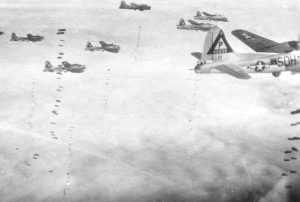 When a mistake is made in the air, it usually results in a disaster. Air disasters often involve the pilot, a mechanic, or an old part. Of course, some of the worst disasters were caused when an air traffic controller sent two planes to the same place at the same altitude. The resulting mid-air collision killed everyone on board. Mistakes are never good, but in the air they are especially devastating.
When a mistake is made in the air, it usually results in a disaster. Air disasters often involve the pilot, a mechanic, or an old part. Of course, some of the worst disasters were caused when an air traffic controller sent two planes to the same place at the same altitude. The resulting mid-air collision killed everyone on board. Mistakes are never good, but in the air they are especially devastating.
War is no different, in fact mistakes in war can be really disastrous. Gunners shooting at the enemy planes are often so focused that when the enemy flies past their own squadron, they can end up shooting down their own squadron members with friendly fire. 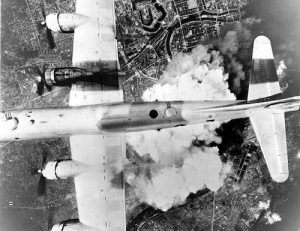
The strange thing is that sometimes, a would be disaster ends up becoming one of the greatest miracles. Such was the case during World War II. The Americans planed a bombing run, and it was going to be a big bombing run. The orders had been issued. The problem…one squadron accidentally showed up thousands of feet lower down than the other one. In many cases, this would not have bee such a big problem, but both squadrons ended up a the drop site at the same time. The scheduled bombing began, and no one would really realize what was about to happen until it was too late.
Neither of the squadrons saw each other, until the bombs had been dropped. Miraculously, none of the lower planes were hit by the higher planes. It was a miracle of epic proportions. In addition, the Germans thought 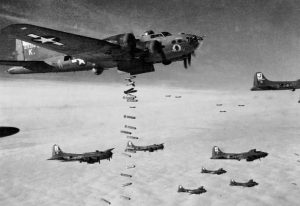 that the Allies had come up with an ingenious bombing strategy to bomb an area twice as much. After that bombing event, the Germans were scared that the Allies had this level of skill. It seemed completely impossible that they could plan a bomb run in which the lower planes flew in sync enough to allow the upper planes to drop their bombs in between the lower planes, while the lower planes were also dropping their bombs. It was impossible, and yet it happened. The impossible was achieved without one bit of planning. There is simply no other word for it. It was a miracle. God took a potential disaster and turned it into one of the greatest feats of warfare.
that the Allies had come up with an ingenious bombing strategy to bomb an area twice as much. After that bombing event, the Germans were scared that the Allies had this level of skill. It seemed completely impossible that they could plan a bomb run in which the lower planes flew in sync enough to allow the upper planes to drop their bombs in between the lower planes, while the lower planes were also dropping their bombs. It was impossible, and yet it happened. The impossible was achieved without one bit of planning. There is simply no other word for it. It was a miracle. God took a potential disaster and turned it into one of the greatest feats of warfare.

